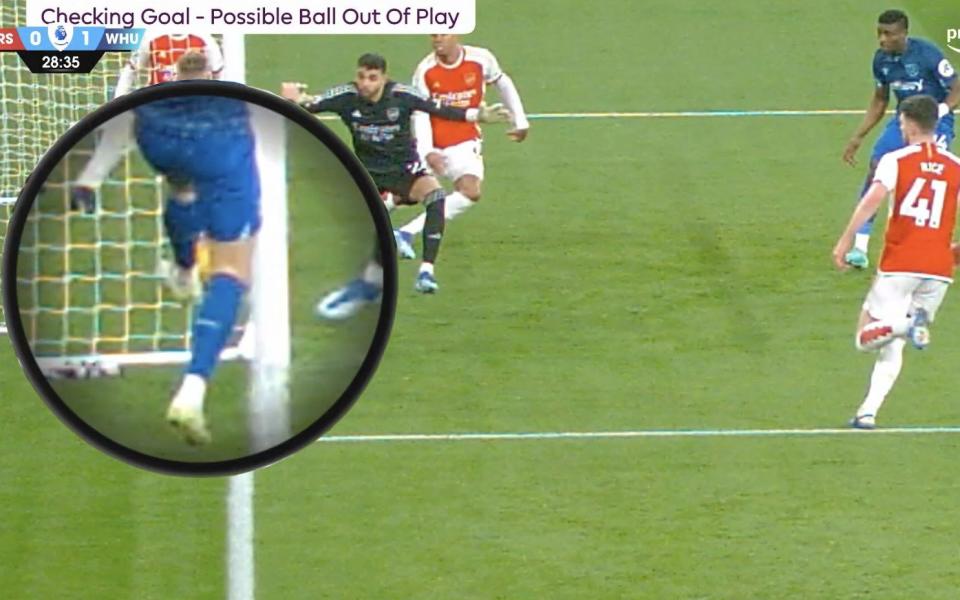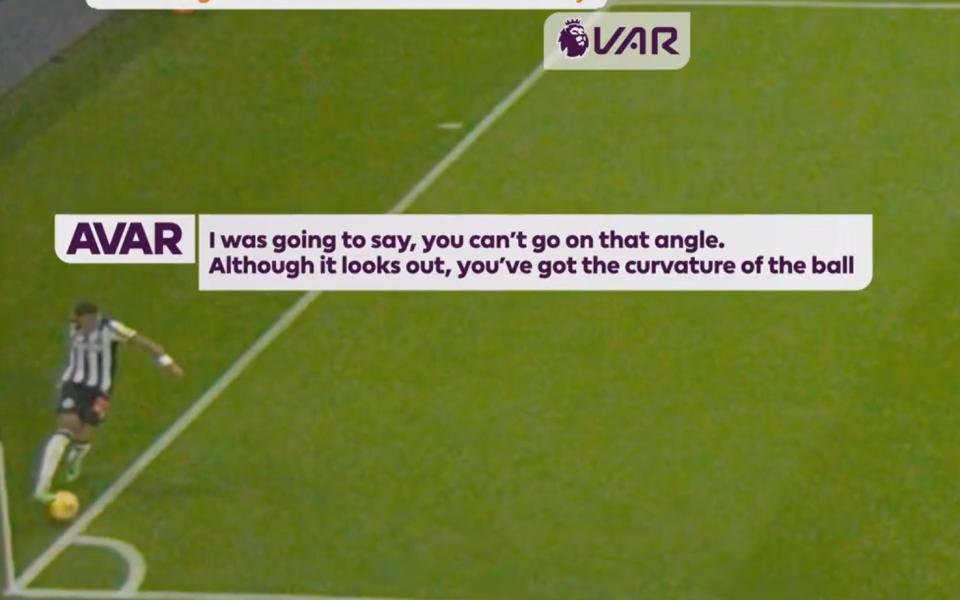Tomas Soucek goal vs Arsenal sparks fresh Var row – this is why it stood

Tomas Soucek’s goal gave West Ham the lead over Arsenal at the Emirates but again there is a debate about the efficiency and accuracy of the Var system.
In an incident reminiscent of the furore surrounding Anthony Gordon’s goal for Newcastle against Arsenal earlier this season, there is a question about whether the ball went out of play in the run-up to the goal.
What happened?
The issue is whether the ball left the field of play, just wide of Arsenal’s goal, before Jarrod Bowen cut it back for Tomas Soucek to score.
There was a lengthy delay as officials studied the camera angles, before they seemingly decided that there was not enough evidence to suggest the ball had fully crossed the line. Bowen’s body was certainly out of play, but it was not clear whether the ball had joined him.
Well, well, well!
The Emirates is stunned as West Ham break the deadlock thanks to Tomas Soucek!#PLonPrime #ARSWHU pic.twitter.com/R2T3jkcB1j— Amazon Prime Video Sport (@primevideosport) December 28, 2023
Is this Newcastle all over again?
There are clear similarities between this goal and the one conceded by Arsenal at Newcastle United earlier this season. On that occasion, the Var officials once again had to decide whether the ball had gone out of play before it was crossed into the box.
It later emerged that the goal, eventually scored by Anthony Gordon, was allowed to stand because there were not enough camera angles to prove that the ball had gone out of play near the corner flag. The referees needed to find “conclusive evidence”, and they could not. The Premier League’s Independent Key Match Incidents Panel later ruled the goal was correctly allowed to stand.
Arsenal coach Mikel Arteta was furious after the Newcastle defeat, labelling it a “disgrace” and while he was charged by the Football Association, he was later cleared.

What was the reaction to the West Ham goal?
Speaking on Amazon Prime Video, former referee Mark Clattenburg said he thought the ball remained in play, based on the camera angles that had been shown to viewers.
“The on-field decision is a goal, so they have to find conclusive evidence that the ball has gone out of play,” he said. “From the angles I have seen, the ball looks to be slightly in play.”
"We cannot be 100% certain the ball has gone out"
Former Premier League referee Mark Clattenburg gives insight into why VAR couldn't overturn the on-field decision of awarding West Ham's opener#PLonPrime #ARSWHU pic.twitter.com/TIp8gracAX— Amazon Prime Video Sport (@primevideosport) December 28, 2023
Within the ground, there was no real sense of outrage at the decision, as there were no replays for supporters. There appeared to be greater frustration at the lengthy delay before the match restarted.
Amazon Prime co-commentator Ally McCoist said: “You can’t tell from the angles. There’s nothing to say the referee’s decision is wrong so that’s why they’ve stood by it.”
Thierry Henry, Arsenal’s record goal scorer, said on Amazon Prime: “The referee needs the right angle. We’re in 2023, nearly 2024, and we still don’t have the angle.”
Clattenburg added: “There’s no other decision the officials can give. The on-field decision is a goal and with all the evidence we have seen, we cannot be 100 per cent certain it’s out.
“The ball has to be clearly over the line. There’s no conclusive evidence. What we need is a chip in the ball, that could clearly tell whether it has crossed the line or not.”
Other precedents
The laws of football state that “The ball is out of play when: It has wholly crossed the goal line or touch line, whether on the ground or in the air.”
At last year’s World Cup this law was thrown into the spotlight after Japan’s controversial winner against Spain. Var judged Karou Mitoma to have kept the ball in play despite video evidence which, at first glance, appeared to show the ball clearly out of play.

Japan’s winner was given because of the ‘curvature of the ball’. Apparently, not all of the ball was over the line, even though the part of the ball that was on the grass clearly was over the line.
The entirety of the ball has to be over the line for the ball to be deemed out. It’s rather like when corner kick takers put the ball slightly outside the quadrant but it is deemed legal.
Commentators confused, after watching the first replay, about why the Japan goal stood. A reminder that camera angles can be deceiving.#WorldCup2022 #JPNESP #JPN pic.twitter.com/Ew12D8SzwT
— James Sharpe (@TheSharpeEnd) December 1, 2022

